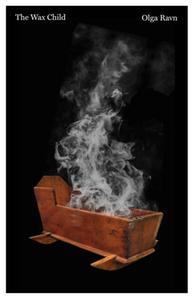
 Danish novelist and poet Olga Ravn hauntingly combines Nordic folklore and historical sources to fiercely reimagine the experiences and tribulations of a 17th-century noblewoman accused of witchcraft in The Wax Child. She reunites with award-winning translator Martin Aitken after her 2021 International Booker Prize shortlisted novel, The Employees.
Danish novelist and poet Olga Ravn hauntingly combines Nordic folklore and historical sources to fiercely reimagine the experiences and tribulations of a 17th-century noblewoman accused of witchcraft in The Wax Child. She reunites with award-winning translator Martin Aitken after her 2021 International Booker Prize shortlisted novel, The Employees.
The titular wax child is "shaped in beeswax... made like a doll the size of a human forearm" by Christenze Kruckow in Nakkebølle on the Danish island of Funen. It is held in her right arm for 40 weeks like "a proper child," then christened under the still darkness of night. As Ravn's narrative opens, Christenze is dead, but the abandoned wax child insists on bearing witness to its mistress's horrific demise: "Now I speak again to the soil that covers my face."
Christenze, born noble but impoverished, works at Nakkebølle Manor as a servant, while also befriending the Manor's young wife, Anne, whose newborn children do not survive. After losing 15 infants over 12 years, Anne "cast her gaze at Christenze," who remains unmarried at 36, "ruddy-cheeked" and "preferring to horse-ride on her own and drink red wine and read letters well into the night." By May 1615, Anne has convinced others that Christenze "is behind it all," this murder of all her babies, prompting her husband to request "a thing-witness, an assembly of eight good men to be convened... to initiate proceedings against [Christenze] with the charge that she did harm by means of witchcraft." Leaving behind a written reply to this "mendacious accusation," Christenze flees to northern Aalborg in 1616, a "city of hate." First she meets Maren and is "enchanted by the forbidden love of a woman." Maren introduces her to the others--Mette, Sidsel, Bodil, Dorte--a collective of strong wives who sow and spin the flax, who clean and pickle the herring. Among them, too, is Elisabeth, who is abused by her pastor husband and who eventually betrays these women to her jealous husband's machinations.
Ravn first acknowledged these women on stage in her 2023 theater production, HEX, at the Royal Danish Theatre. "This novel builds on that play, dialoguing with the script I wrote for it." Her author's note illuminates fascinating historical provenance, the "letters, ledgers, court documents and theological texts" associated with Danish witch trials recorded between 1596 and 1621. The "spells" recorded throughout are also borrowed, from "so-called black books, grimoires and other such works." Four centuries later, Ravn enthrallingly immortalizes those long-silenced voices. --Terry Hong
Shelf Talker: In The Wax Child, novelist and poet Olga Ravn turns 17th-century terrifying Danish women's history into a sublime novel of struggle and resilience.

